HEADLINE: “Six Slides From the American Gas Association Winter Heating Outlook” It’s a gas, naturally”, by ISAAC ORR AND MITCH ROLLING
“In September of 2025, the American Gas Association published its 2025-2026 Winter Heating Outlook. Here are six slides from their analysis we thought offered some of the most interesting insights.”
Six Slides From the American Gas Association Winter Heating Outlook
It’s a gas, naturally
In September of 2025, the American Gas Association published its 2025-2026 Winter Heating Outlook. Here are six slides from their analysis that we thought offered some of the most interesting insights.
Consumption and Production
Natural gas demand and production continue to surge. According to AGA’s figures, the demand for natural gas has increased by approximately 66 percent since 2007, and production has essentially doubled in the same time frame.
Much of that demand growth stems from the fact that electricity generation from natural gas power plants has grown from 21 percent of generation in 2007 to 43 percent of generation in 2023, according to U.S. Energy Information Administration (EIA) data.
Pipeline Additions
Rising natural gas production will necessitate more takeaway capacity. AGA’s slides indicate that new pipeline capacity is expected to be largely intrastate, or pipelines built within a state without crossing borders, in order to avoid onerous federal permitting challenges.
As a result, the majority of new pipelines will be built in the Gulf Coast states of Texas and Louisiana to serve domestic demand and Liquefied Natural Gas (LNG) export facilities. This continues a trend where intrastate pipeline capacity additions and expansions have far outpaced interstate additions.
Peak Demand
Unreliable energy advocates who want to “electrify everything,” including home heating, need to take a good look at the graph below. It shows that the peak energy delivered by natural gas is nearly four times higher than the peak energy delivered by electricity.
There are many problems with the notion that we can easily electrify home heating.
Electrification advocates will argue that the challenge is much more manageable than the graph would suggest because heat pumps can transfer heat at 3x the efficiency of electric resistance heaters and gas furnaces. As a result, they would argue, the peak isn’t really nearly 4x higher than peak electric load, but substantially lower.
This argument doesn’t stand up to scrutiny, though. Heat pump technology is improving, but one of the most common cold-weather models, the Mitsubishi Hyper Heat, shuts off entirely at -22 F to keep the machine from breaking. This means an electrified heating system would switch over to electric resistance heat, which is far less efficient than heat pumps. Most of the country doesn’t hit -22 F very often, but it is a very real concern in the coldest areas of the country, where the peak natural gas demand is also the highest.
There is also the question of how these heat pumps or electric resistance heaters would be powered. Winter peak demand happens at night when solar panels aren’t helpful, and the peaks can be longer-lasting than summer peaks. Wind turbines also stop operating at -22Fto keep them from breaking, so where exactly will the power come from?
Storage Capacity
This slide will be fun to point to when wind, solar, and battery storage advocates brag about how much storage capacity is being added in the U.S. You’re adding 1,000 MW of four-hour storage? That’s cute. The U.S. has 21,180,000 MWhs of natural gas storage capacity, and building LNG storage costs 141 times less than battery storage.
It’s also interesting to see that pumped storage still accounts for more electricity storage capacity than batteries.
The Cheapest Heating Fuel
On a price per million British thermal unit (MMBtu) basis, natural gas is the lowest-cost fuel for home heating, at approximately $12 per MMBtu. Propane and fuel oil pencil out to around $30 per MMBtu, and electricity is by far the highest at $50, roughly five times that of natural gas.
Rates vs Bills
We often see people make arguments that high electricity prices in California are no big deal because they have lower average monthly bills than places like Texas. But this is like arguing that people don’t care about gasoline prices; they care about what their total payment is. Nobody thinks this way.
The same thing could be argued for home heating costs. The graph on the right suggests that people who heat their homes with electricity have much lower bills than those who heat with propane or fuel oil, and similar bills to those who heat their homes with natural gas.
Again, the difference boils down to the volume of energy needed to perform the work of home heating.
The maps below from EIA show the regions of the country that heat with each fuel. Natural gas, propane, and to a much smaller extent, heating oil, are the preferred heating fuels of the coldest places of the country, while electricity dominates in the warmest parts, or places with historically cheap electricity, like the Pacific Northwest.
This is why AGA’s adjusted home heating bills, which attempt to normalize for climate and house size, show homes that heat with electricity would pay more for their home heating than those using natural gas.
Conclusion
It’s easy to overlook the huge volumes of energy natural gas delivers to our homes each winter. Production and demand have surged in the United States, enabled by the shale boom, and the wealth of cheap gas has provided affordable home heating for hundreds of millions of Americans since natural gas prices peaked in 2008.
We’d be foolish to squander this advantage, but that won’t stop some people from trying.





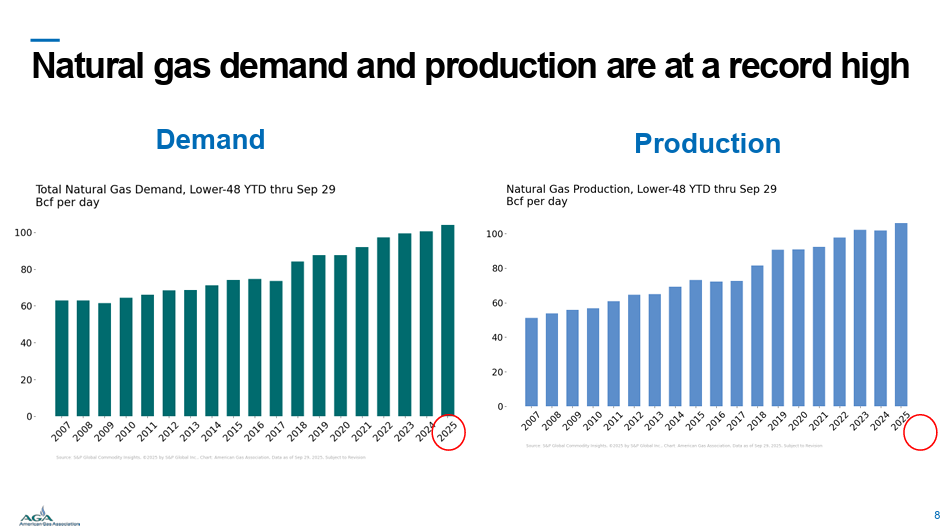
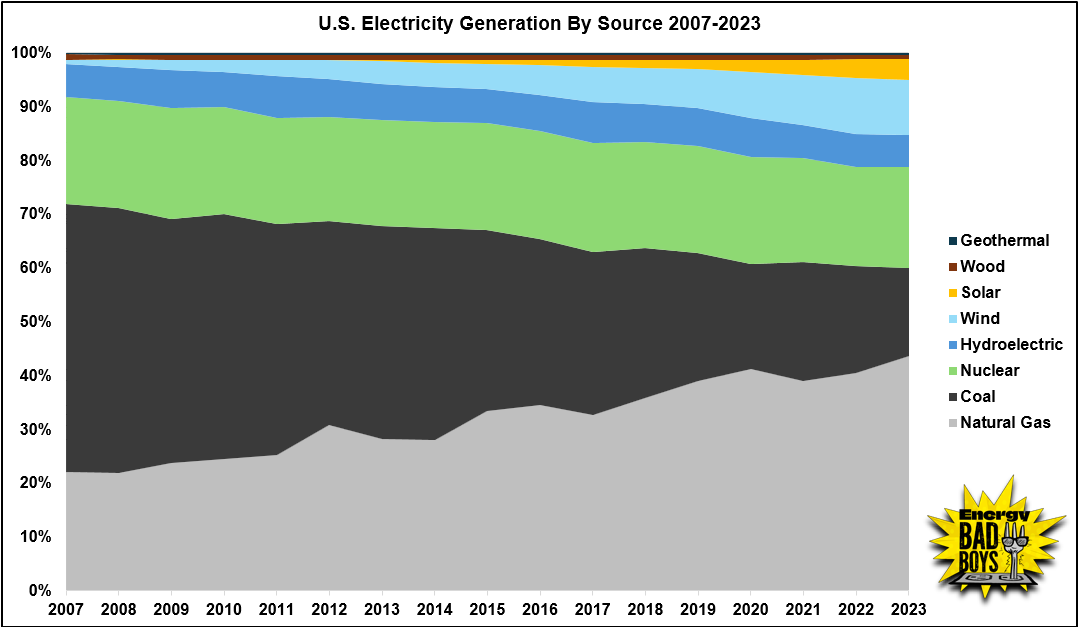

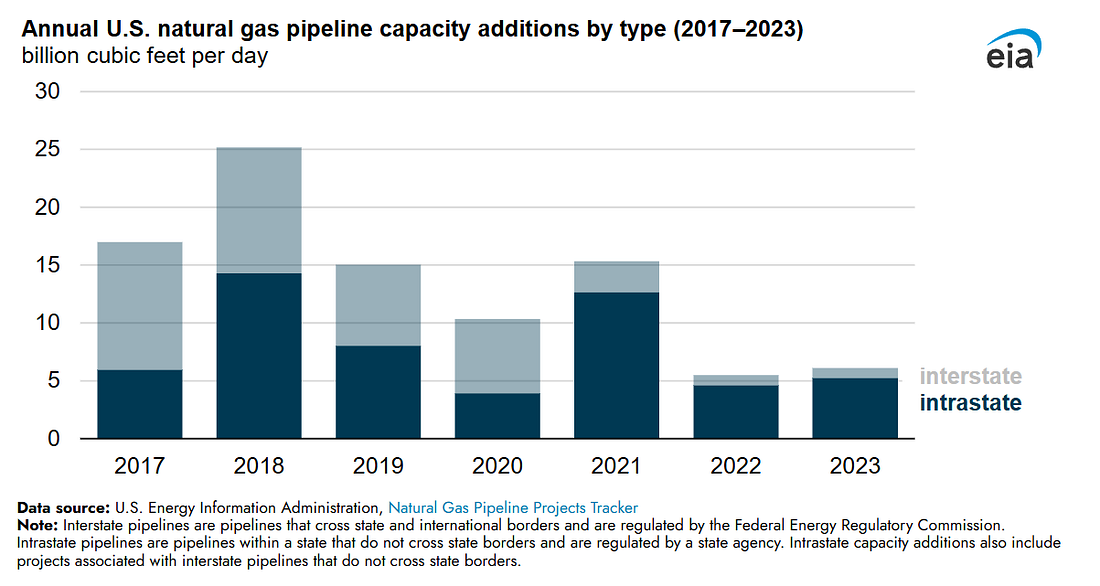
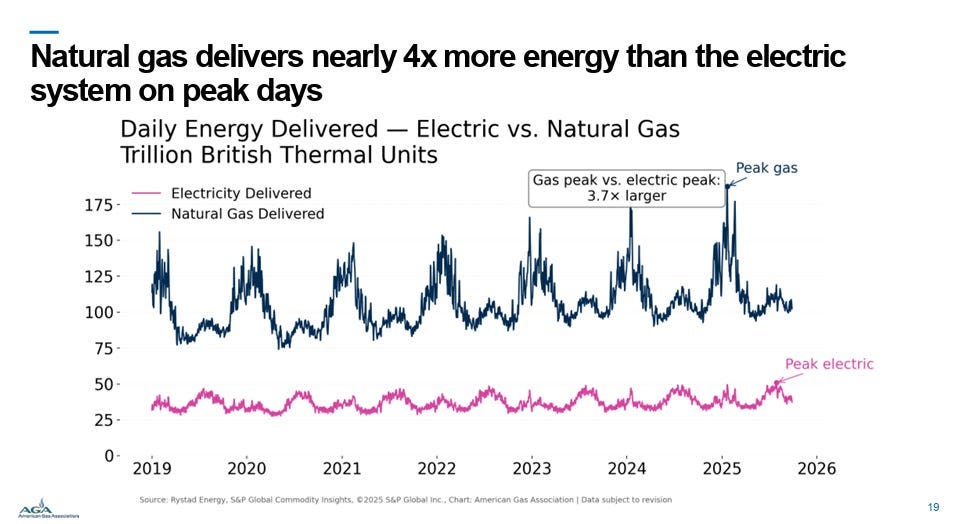
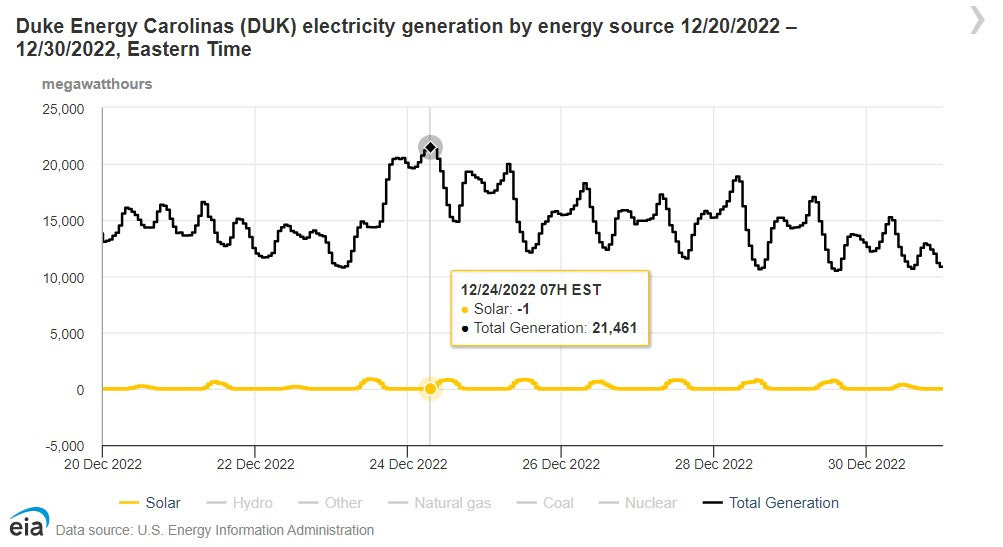
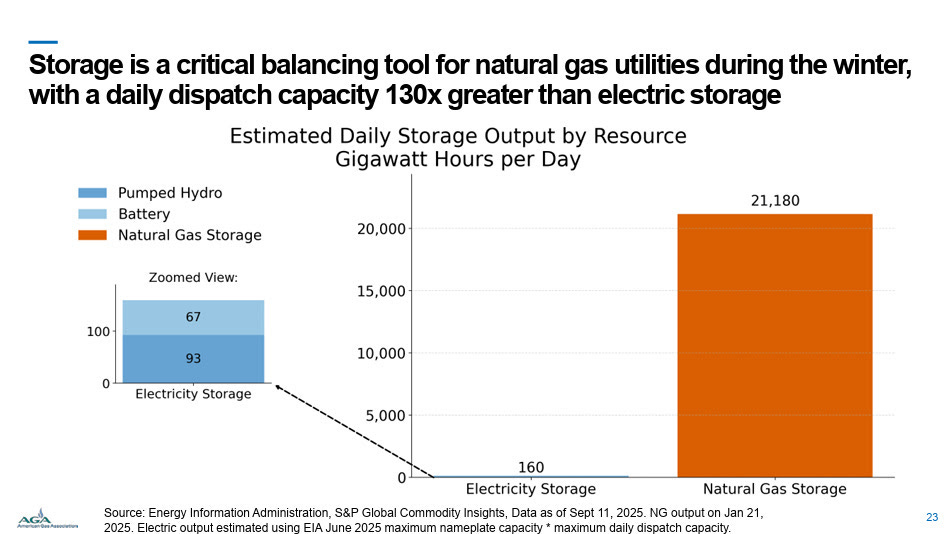
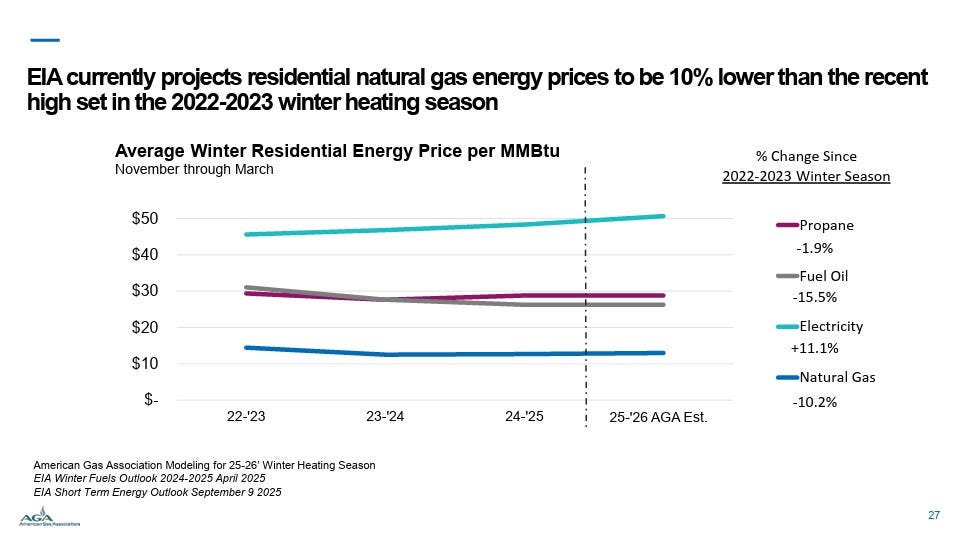
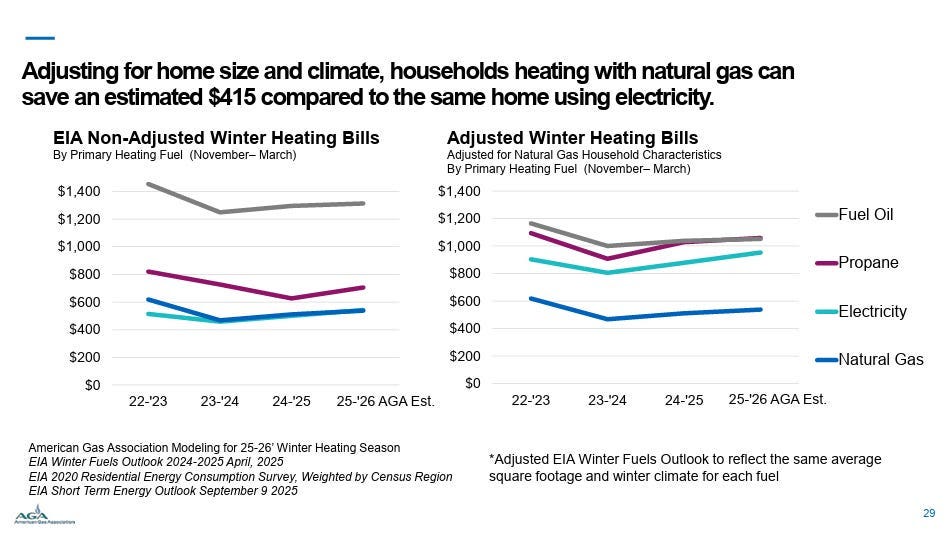


Electricity costs less in California than in Texas? I'm sure there must be some logic in there somewhere. The latest prices (cents per kiloWatt hour) are California 33.52 Residential 26.69 Commercial, Texas 15.23 and 8.60.
If the Californians are spending slightly less than the Texans, for less than half as much energy, it's almost as if that's all the energy they could afford to buy. As an example my spending on Ferraris and luxury yachts is very low indeed.